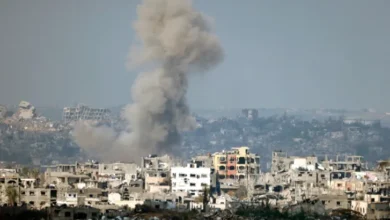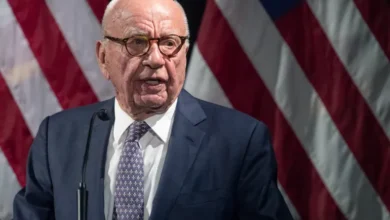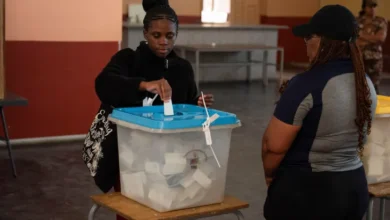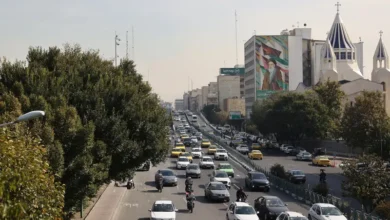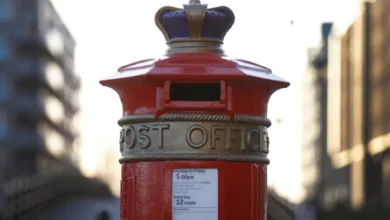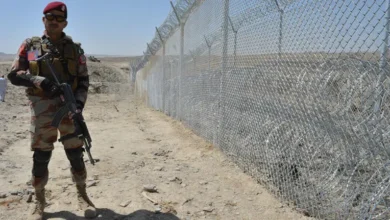Ukraine puts ‘pressure on the aggressor’, catches Russia off-guard in Kursk
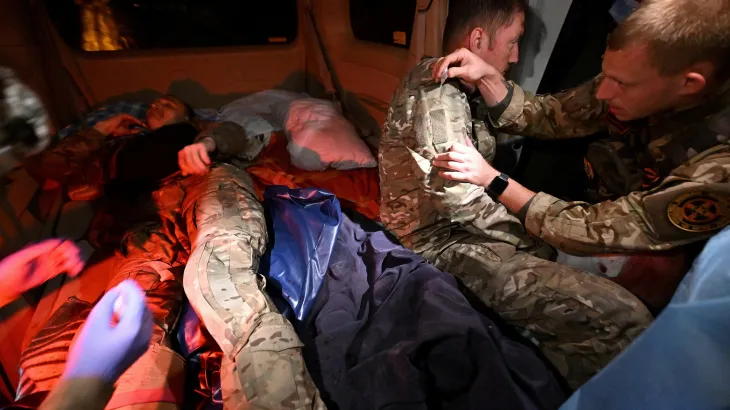
Ukraine’s armed forces tore into southwestern Russia in a surprise attack during the past week, claiming almost as much territory as Russian forces have taken in Ukraine since the beginning of the year.
Oleksandr Syrskii, Ukraine’s commander-in-chief, claimed Kyiv’s forces controlled about 1,000sq km (386sq miles) in Russia’s Kursk region on Monday, six days into the offensive.
The Institute for the Study of War, a Washington-based think tank, estimated Ukraine’s advances at about 800sq km (309sq miles) based on satellite imagery and open source information. It assessed that Russian forces had occupied 1,175sq km (454sq miles) of Ukrainian territory since January.
The Ukrainian incursion, undertaken with scant resources while the country defends itself against the Russian full-scale invasion, also compares favourably with Russia’s attempt to open a new front in Kharkiv last May, which advanced 6-10km (4-6 miles) before being stopped.
Russia’s Federal Security Service (FSB) and border guards in Kursk were clearly caught unprepared.
On August 7, 24 hours into the offensive, geolocated video showed Ukrainian armoured vehicles about 10km (6 miles) from the border. Finnish military analyst Emil Kastehelmi assessed they had penetrated at least two Russian defensive lines.
Russian authorities were also caught off-guard.
Anti-Kremlin Russian militias have launched border skirmishes from Ukraine at least twice during the war, but the Ukrainian military has avoided provoking Russia with a ground invasion until now.
The Russian Ministry of Defence initially announced this was another raid by Russian irregulars, and then stepped back from the claim, removing an official post on social media.
Russian President Vladimir Putin called the incursion a “large-scale provocation”, not an invasion.It was not until Friday, three days into the battle, that Russia’s Defence Ministry announced it had sent additional rocket systems and tracked vehicles to help defend Kursk. And it wasn’t until Saturday that Ukrainian President Volodymyr Zelenskyy acknowledged that Ukrainian troops were responsible.
In an evening address, he said, “Russia has brought war to others, now it’s coming home. Ukraine has always wanted only peace, and we will definitely ensure peace.”
“Chief of Staff Syrskii has already reported several times – regarding the front and our actions and pushing the war into the territory of the aggressor,” Zelenskyy said in an evening address. “Ukraine proves that it really knows how to restore justice and guarantees exactly the kind of pressure that is needed – pressure on the aggressor.”
Even then, Russian authorities chose to downplay the threat, with FSB head Alexander Bortnikov saying “sabotage and reconnaissance units” were conducting “terrorist acts” in Russia.
By Tuesday, Zelenskyy said, Ukrainian forces “control” 74 localities in Kursk, presumably meaning towns and settlements. Geolocated footage has placed them up to 24km (15 miles) inside Russia, along a 40km (25-mile) wide front. Some Russian military reporters have put them as much as 35km (22 miles) inside Russia.
How did Ukrainian troops manage it, and what is Kyiv’s motive?
Few details of Ukrainian tactics have emerged, but Russian reporters have spoken of small Ukrainian armoured units using “raid tactics” well behind Russian fortifications, then withdrawing and leaving larger forces to consolidate gains.
Sumy’s military administrator, Volodymyr Artyukh, on Sunday said Russia had introduced a new threat.
“Previously, these were simple antitank missiles that [attacked] populated areas. Now there are new gliding munitions, but with an engine,” Artyukh told a telethon. He said Russia was dropping 40-50 of these glide bombs bombs a day.
If Ukraine hoped to distract Russian combat-ready units from the difficult eastern front, the gambit didn’t seem to have worked, at least not yet.
Fighting remained fierce in the Luhansk, Donetsk and Kharkiv regions, with Russian and Ukrainian units both making gains. Ukrainian retired Colonel Konstantin Mashovets, who monitors the war closely, said Russia had only redeployed the equivalent of 10-11 battalions to deal with the threat in Kursk.
Matthew Savill, military sciences director at the Royal United Services Institute (RUSI), suggested the motive might have been to “strike a blow against Russian prestige and morale” while “boosting Ukrainian morale after months on the defensive”.
Evacuating 200,000 Russian civilians from border regions is likely to have caused Moscow embarrassment.
More practically, he said, Ukraine might aim at gathering prisoners to exchange or to threaten Russian supply lines feeding the Russian incursion into Kharkiv, further east, a goal Mashovets agreed was key.
Does Ukraine intend to hold this ground?
“While the Ukrainians have reversed the public narrative about being on the defensive,” Savill said, “it seems unlikely they would want to sustain a large incursion for months; they will have a decision to make about the best time to trade in the ground they have captured, and to what end.”
Trading Russian territory might be an aim, White House national security spokesman John Kirby seemed to suggest, when he told reporters on Monday, “This is Putin’s war against Russia. And if he doesn’t like it, if it’s making him a little uncomfortable, then there’s an easy solution: He can just get the hell out of Ukraine and call it a day.”
The fact that Ukraine was using US hardware to invade Russia did not disturb US officials.
